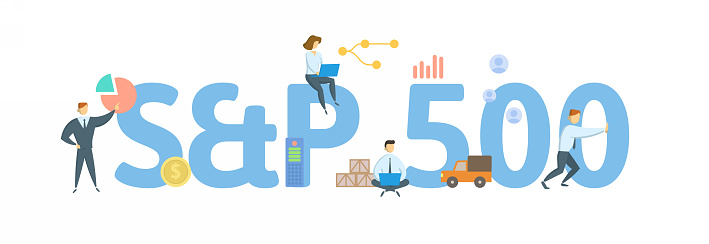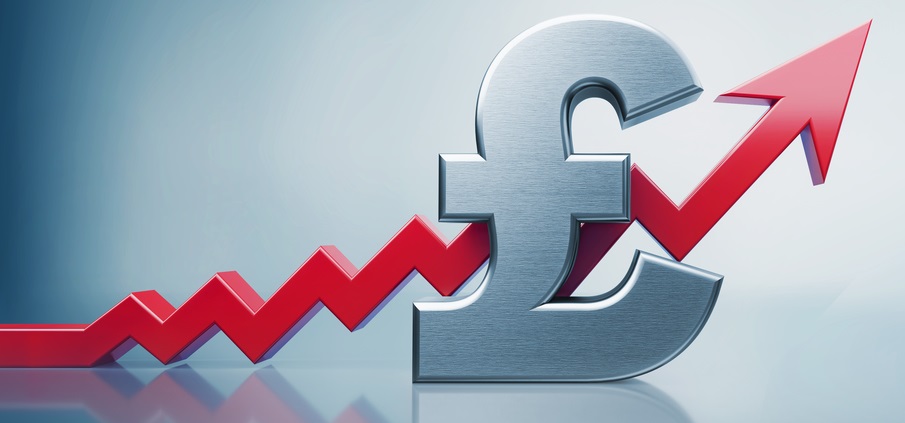The S&P 500 index gained for a sixth consecutive day yesterday, the best such run since the seven-day win streak that ran from the 24th of June to the 2nd of July. By comparison, the current win streak has seen the index rally more than 4.0%, while the late-June/early-July rally saw the index gain 2.6%. The S&P 500 index closed at 4536, leaving it only a whisker from the September all-time closing high, while at its intra-day peaks yesterday, the index was barely 1.0% record intra-day levels. As reiterated throughout the week, the main driver of the most recent rally has been a strong start to the Q3 earnings season; market commentators pointed out this morning that 67 of 80 S&P 500 companies that had reported as of Wednesday had beaten analyst expectations. Things weren’t quite as positive for the tech/growth/duration-sensitive heavy Nasdaq 100 index on Wednesday, which snapped a five-day win streak to close 0.1% lower, leaving the index about 2.0% from the record levels printed back in September. The index underperformed amid a pick-up this week in longer-term US bond yields; the 10-year hit multi-month highs above 1.67% overnight, with the latest move higher largely driven by a rise in inflation expectations, with 10-year breakeven inflation expectations now at their highest since 2013 above 2.57%, a more than 30bps pick up from September lows around 2.25%.
Sentiment during the Asia Pacific session was a little more downbeat, with the Nikkei 225 and Hang Seng indices both posting hefty losses of about 1.8% and 1.0% respectively and other major regional bourses subdued. Evergrande has been back in the headlines amid reports that its attempts to sell a 51% stake in one of its key units have collapsed and the firm is struggling with other sales, all while a key deadline to pay the coupon on a dollar bond approaches at the weekend; failure to pay would mean default. Reassurance from the PBoC recently that the fallout from an Evergrande default would be controllable may keep a floor under Asian markets for now. Nonetheless, things are a little more cautious this morning and profit-taking following an impressive recent run of gains appears to be weighing on European equity markets (Stoxx 600 -0.2%) and US index futures (E-mini S&P 500 futures -0.3% ahead of the 1430BST cash open).
Some analysts have made an important observation about the resilience of equity markets in recent weeks despite rising commodity prices and evidence of persistent supply chain disruptions driving up inflation expectations and an aggressive repricing of expectations for a more front-loaded hiking cycle from the majority of G10 central banks. In the past, equity investors have cited interest hikes as a key risk to the outlook, but it seems the market is comfortable with current money market pricing for the likes of the BoE, RBNZ and Norges Bank to start or continue hiking rates in 2021 and for the Fed and BoC to join the party sometime in 2022 – for now, it seems as though market participants deem the more front-loaded hiking cycles expected from these banks to be appropriate given rising inflation risks. Perhaps hiking sooner to make sure inflation expectations don’t become de-anchored will ultimately mean that the terminal level of interest rates can be lower, equity market participants may currently be reasoning. If markets begin to deem expectations for G10 central bank policy (most importantly the Fed) as inappropriate for the economic backdrop (for example, that the Fed has become too hawkish), this is when stocks might start hurting. Recall the sell-off in December 2018; despite slowing global growth as a result of rising US/China trade tensions and risk that the trade spat was set to worsen, the Fed continued to hike into the end of the year, a move deemed a mistake by equity investors, who pushed the S&P 500 down as much as 20% at the time.
For now, growth remains strong (though slower than earlier in the year as Covid and supply/labour shortage issues weigh), so there are very few qualms from market participants about a gradual reduction in stimulus. Indeed, market participants largely recognise the inflation risks faced in the US and the “transitory” narrative being pushed by many economists appears to be crumbling, strengthen the conviction that rate hikes are appropriate within the next 12 months. With US markets confident in the US growth outlook and that Fed policy is, for now, appropriate/optimal, markets can focus on earnings, which as mentioned above, have been strong so far. But the earnings season is young, and we still wait to hear from many companies about how labour shortages and rising input costs are hitting their margins – the sense, for now, is that much of this cost can be handed off to the end consumer, a theme alluded to in last night’s Fed Beige Book. If further evidence that earnings growth and margins remain strong, that should be enough to propel the S&P 500 index beyond its previous record highs and towards the 5K level heading into the year-end.
Markets have been less focused on the pandemic in recent weeks, but it is worth noting that the news has been turning a little more negative in recent days regarding increasing infection rates (i.e. in the UK, Australia, New Zealand and even now China) and some countries imposing of extending restrictions (Russia, Czech Republic, Singapore). But conviction remains in the idea that vaccine rollouts have broken the link between infections and deaths – news this morning from Pfizer that a third (booster) dose of its vaccine efficacy back up to the mid-90s% will ease worries about waning vaccine efficacy and the news a few weeks ago from Merck (their new pill reduces the hospitalised mortality rate by 50%) increases confidence we are moving to the “living with the virus” stage of the pandemic (accepting the virus is going to be endemic now we have good protection and treatments). Still, high infection rates and economic restrictions (even if much lighter than the 2020 lockdowns) pose a downside risk to growth in the remainder of Q4 and into Q1 2022. One to watch.
Looking at commodity markets; WTI hit fresh highs since 2014 yesterday above the $84.00 per barrel level and Brent this morning squeaked out a fresh high dating back to 2018 above the $86.00 level. Both had dropped a couple of dollars yesterday (to around $81.00 and $84.00 respectively) but were lifted off of lows following a bullish weekly US EIA inventory report that showed a surprise drop in crude stocks – there was also focus on crude inventories at Cushing falling to their lowest since 2019. Both WTI and Brent have pulled back a little from these multi-year highs as the European session has progressed and are trading in the red on the day, but both remain supported by the ongoing bullish narratives of global undersupply (thanks to OPEC+’s ongoing output cut agreement and the struggles of US industry to increase output), which comes amid a broader fossil fuel energy crunch. On which note, US Nat Gas prices are substantially down from earlier month highs but still substantially elevated by historic standards (the same for global gas markets). Coal prices in China, meanwhile, continue to correct with authorities there jawboning prices lower earlier in the week (signalling intent to crack down on speculators and ensure coal mines operate at maximum capacity).
Finally, a quick look at FX markets; with risk appetite a little more subdued this morning, we are seeing a modest reversal of some of the pro-risk moves seen in recent days/weeks. The yen is the outperforming currency amid what strategists are calling some much overdue profit-taking, while fellow haven currencies USD and CHF are the next best performers. The DXY appears to have formed something of a base in the 93.50 area, though if pro-risk flows are to reaccelerate in the coming days, that could fuel a break below. EUR and GBP are currently flat on the day with domestic catalysts for each few and far between, while the more risk/commodity-sensitive non-US dollars are seeing modest underperformance. Notably, in EM, the Turkish Lira is down about 2.0%, with USDTRY flying to fresh record highs above 9.4 (having surged from earlier levels around 9.2) after a surprisingly large 200bps rate cut from the CBRT (who are cutting despite headline CPI at close to 20% given pressure from President Erdogan).
In terms of the day ahead, markets will be focused on the start of a two-day EU Leaders summit where conflict within the EU (namely with Poland) and the response to the energy price spike will be on the agenda. At 1330BST, weekly US jobless claims data and the latest Philly Fed Manufacturing report (October) are out, ahead of further comments from Fed member Waller at 1400BST and US September Existing Homes, US September Leading Index and Eurozone October Consumer Confidence at 1500BST.




